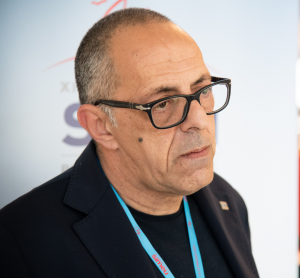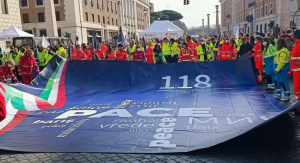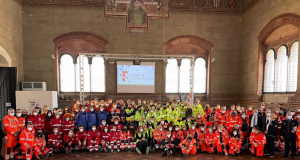Otto mesi per omicidio colposo
sabato, luglio 23rd, 2022di Fabio De Iaco
 Il titolo di giornale è un colpo allo stomaco: “Morto dopo sette ore al Pronto Soccorso, condannato l’infermiere che lo classificò codice verde”.
Il titolo di giornale è un colpo allo stomaco: “Morto dopo sette ore al Pronto Soccorso, condannato l’infermiere che lo classificò codice verde”.
La condanna: otto mesi per omicidio colposo.
Chi conosce il Pronto Soccorso non può non percepire una profonda dissonanza tra l’evento drammatico e l’esito giudiziario: può l’agire personale di un singolo professionista essere l’unica causa punibile del fallimento (vero o presunto, qui poco importa) di un intero sistema?
La Medicina d’Emergenza Urgenza (in questo caso il Pronto Soccorso) non può essere banalmente ridotta a un semplice atto medico o infermieristico: è organizzazione, è stratificazione del rischio, è valutazione probabilistica, è continua collaborazione interprofessionale. È un sistema complesso di ingranaggi che consente di gestire decine di milioni di accessi, richieste, visite, ogni anno. In un rapporto numerico tra professionisti e pazienti che, senza l’organizzazione, decreterebbe il fallimento immediato della disciplina.
Il triage è l’elemento cruciale del sistema: senza una valutazione professionale della priorità della visita ogni Pronto Soccorso crollerebbe in un’ora. E per questa valutazione occorre una competenza specifica, con buona pace di coloro che disquisiscono di codici e colori senza neppure conoscere la differenza tra i concetti di priorità e gravità. La competenza sul triage è dell’infermiere, che per legge si forma con specifici corsi e applica protocolli complessi, mettendosi sulle spalle la responsabilità dei flussi di Pronto Soccorso. E gli innumerevoli esiti positivi del Pronto Soccorso, quelli che, giustamente, non fanno scalpore e non finiscono sui giornali, sono dovuti anche alla continua e professionale opera degli infermieri di triage.
Sono affermazioni banali per gli addetti ai lavori ma diventano necessarie quando, come in questo caso, al clamore mediatico di una sentenza corrisponde la solita ondata di commenti a discredito della professionalità degli infermieri, pronti a coprire di fango un professionista la cui responsabilità sarà comunque ancora oggetto di ulteriori gradi di giudizio.
Insomma, che sia chiaro: il triage è competenza di un unico professionista, l’infermiere.
Stabilito questo, alcune considerazioni generali sono dovute, pur non volendo né potendo entrare nello specifico di una sentenza di cui attendiamo le motivazioni.
Primo: per definire la responsabilità del professionista è necessario rispondere a due domande:
- C’è stato errore (inteso come deviazione rispetto a protocolli e buone pratiche)?
- C’è un nesso di causalità tra l’eventuale errore e l’esito infausto?
Domande cruciali che generano altri interrogativi, tra i quali:
- c’è stata qualche decisione non conforme al protocollo aziendale?
- le informazioni emerse durante il dibattimento erano tutte disponibili al professionista?
- quali condizioni sono state certificate dalla visita medica (parametri, esami, ecc.)?
- qual era la situazione di affollamento e quale traffico è stato registrato in quelle ore?
Leggeremo le motivazioni della sentenza.
Ma è un fatto che per rispondere a questi interrogativi è necessaria una profonda e certificabile conoscenza del mondo del Pronto Soccorso. Ma qui, per esperienza comune pluriennale, è lecito immaginare che le consulenze tecniche di cui ci si è avvalsi non siano giunte da professionisti di Medicina d’Emergenza Urgenza.
Pongo una semplice domanda: nel corso del processo è stato interpellato un infermiere esperto di triage? O un direttore di Pronto Soccorso? Sarebbe logico giudicare un evento accaduto in UTIC senza una consulenza di cardiologia? O in dialisi senza un nefrologo? Tuttavia quando l’imputato è il Pronto Soccorso ogni altro specialista è autorizzato a fornire pareri tecnici.
Secondo: è probabile che il giudizio dipenda da un’interpretazione rigida dei tempi d’attesa correlati al codice di triage. Ma i tempi previsti nei protocolli di triage sono indicativi: obiettivi ai quali mirare compatibilmente con la situazione di impegno dell’intera struttura. La stessa attesa di oltre sei ore per un codice verde (com’è accaduto nel caso in questione) è certamente il risultato di una situazione di affollamento, di carico di lavoro del Pronto Soccorso superiore alle risorse disponibili. Così come non è stata rispettata la tempistica d’attesa per il codice verde, perché si dovrebbe pensare che sarebbe stato possibile per un codice giallo?
Terzo: il triage ha subito un’evoluzione migliorativa. Non è un caso se questa Società Scientifica ha licenziato, da anni, nuove linee guida, di concerto con la Conferenza delle Regioni, che ancora attendono di essere applicate diffusamente sul territorio nazionale. Non è azzardato pensare che con il triage a cinque livelli la priorità del paziente sarebbe stata differenziata rispetto alla moltitudine indistinta di codici verdi generata dal triage a quattro codici. E l’insufficienza del sistema non può essere imputata al professionista che applica l’unico protocollo disponibile e validato.
In questa storia ci sono vari livelli di lettura: per prima c’è la dimensione umana, dei singoli sfortunati protagonisti.
A partire dalla persona purtroppo deceduta, dai suoi famigliari, dalle persone a lui vicine: la vicinanza e la solidarietà sono, ovviamente, fuori discussione. Pur conoscendola bene, alla morte improvvisa in Pronto Soccorso non ci abitueremo mai, e continueremo a considerarla una sconfitta.
E poi c’è l’infermiere condannato: non c’è alcuna volontà di sottrarci alla valutazione della responsabilità del singolo professionista (non lo facciamo mai, ogni volta che mettiamo una firma o eseguiamo una procedura). Ma una condanna per omicidio colposo è un peso tremendo, al quale ci sentiamo tutti esposti quotidianamente, e del quale non vogliamo immaginare le conseguenze personali e famigliari.
Ma c’è un altro livello di lettura, non meno importante: è pensabile continuare a ignorare l’assoluta peculiarità della Medicina d’Emergenza Urgenza? Si può proseguire a trattare l’attività di Pronto Soccorso come quella di qualunque altro reparto dell’ospedale? Possiamo ignorare ancora le enormi difficoltà attraverso le quali i nostri professionisti continuano a fornire un servizio vitale? Si può mettere ogni giorno in gioco la responsabilità dei singoli di fronte alle enormi carenze del sistema?
Sono domande che attendono risposte adeguate, dalle quali dipende non solo la sopravvivenza della disciplina, ma soprattutto la disponibilità futura di un servizio insostituibile per la salute dei cittadini.
L’importanza di questa sentenza è enorme: in futuro potrà fare giurisprudenza, condizionare i comportamenti, determinare la disponibilità stessa degli infermieri a proseguire in un’attività gravosa, di grande responsabilità, usurante e non valorizzata.
Per tutti questi motivi, ma anche per la vicinanza dovuta a un collega in difficoltà, restiamo accanto al nostro infermiere e gli offriamo totale sostegno.



